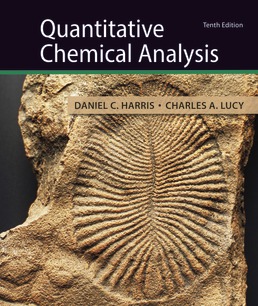

Principles of Electric Circuits is a breakthrough introductory text that brings clarity and precision to the study of basic electronics. Enhanced comprehensive approach This edition incorporates additional examples, safety notes, tech tips, checkup questions, history notes, new illustrations, new and revised problems, an expanded glossary, key terms, and biographies of famous people to provide learners with all the tools needed for a thorough understanding of the subject.Inclusion of LTSpice This includes two examples of Bode plots with both Multisim and LTSpice results.New devices and applications This edition introduces learners to magnetoresistive random access memory (MRAM), magnetohydrodynamic (MHD) generators, and wave traps in power line carrier communications (PLCC).


 Solving problems using a graphing calculator This edition features examples of step-by-step procedures for solving problems with the TI-84 Plus CE graphing calculator, including graphing examples, matrix algebra, and phasors. The book also includes expanded discussion of SMD resistors, resistor power ratings, batteries, thermal imaging, ferrites and ferrite beads, contactors, and motor starters. Discussion on new instruments Use of arbitrary function generators (AFGs), arbitrary waveform generators (AWGs), oscilloscopes and probes, gaussmeters, LCR meters, thermal imaging devices, and current pulser and tracers have all been covered at length. Table of Standard Resistor ValuesĪppendix D. Three-Phase Systems in Power ApplicationsĪppendix A. Introduction to Alternating Current and Voltageġ1–2 Sinusoidal Voltage and Current Valuesġ3–2 Sinusoidal Response of Series RC Circuitsġ3–5 Impedance and Admittance of Parallel RC Circuitsġ3–7 Analysis of Series-Parallel RC Circuitsġ5–1 Sinusoidal Response of Series RL Circuitsġ5–4 Impedance and Admittance of Parallel RL Circuitsġ5–6 Analysis of Series-Parallel RL Circuitsġ6–7 Transformer Ratings and Characteristicsġ6–8 Tapped and Multiple-Winding Transformersġ7–7 Analysis of Series-Parallel RLC CircuitsĢ0–2 Response of an RC Integrator to a Single PulseĢ0–3 Response of RC Integrators to Repetitive PulsesĢ0–4 Response of an RC Differentiator to a Single PulseĢ0–5 Response of RC Differentiators to Repetitive PulsesĢ0–6 Response of RL Integrators to Pulse InputsĢ0–7 Response of RL Differentiators to Pulse InputsĢ0–8 Relationship of Time Response to Frequency ResponseĢ1. 1–3 Engineering Notation and Metric Prefixesģ–1 The Relationship of Current, Voltage, and ResistanceĤ–4 Energy Conversion and Voltage Drop in Resistanceħ–1 Identifying Series-Parallel Relationshipsħ–2 Analysis of Series-Parallel Resistive Circuitsħ–3 Voltage Dividers with Resistive LoadsĨ–8 Delta-to-Wye (Δ-to-Y) and Wye-to-Delta (Y-to-Δ) Conversionsĩ–1 Simultaneous Equations in Circuit Analysisġ1.
Solving problems using a graphing calculator This edition features examples of step-by-step procedures for solving problems with the TI-84 Plus CE graphing calculator, including graphing examples, matrix algebra, and phasors. The book also includes expanded discussion of SMD resistors, resistor power ratings, batteries, thermal imaging, ferrites and ferrite beads, contactors, and motor starters. Discussion on new instruments Use of arbitrary function generators (AFGs), arbitrary waveform generators (AWGs), oscilloscopes and probes, gaussmeters, LCR meters, thermal imaging devices, and current pulser and tracers have all been covered at length. Table of Standard Resistor ValuesĪppendix D. Three-Phase Systems in Power ApplicationsĪppendix A. Introduction to Alternating Current and Voltageġ1–2 Sinusoidal Voltage and Current Valuesġ3–2 Sinusoidal Response of Series RC Circuitsġ3–5 Impedance and Admittance of Parallel RC Circuitsġ3–7 Analysis of Series-Parallel RC Circuitsġ5–1 Sinusoidal Response of Series RL Circuitsġ5–4 Impedance and Admittance of Parallel RL Circuitsġ5–6 Analysis of Series-Parallel RL Circuitsġ6–7 Transformer Ratings and Characteristicsġ6–8 Tapped and Multiple-Winding Transformersġ7–7 Analysis of Series-Parallel RLC CircuitsĢ0–2 Response of an RC Integrator to a Single PulseĢ0–3 Response of RC Integrators to Repetitive PulsesĢ0–4 Response of an RC Differentiator to a Single PulseĢ0–5 Response of RC Differentiators to Repetitive PulsesĢ0–6 Response of RL Integrators to Pulse InputsĢ0–7 Response of RL Differentiators to Pulse InputsĢ0–8 Relationship of Time Response to Frequency ResponseĢ1. 1–3 Engineering Notation and Metric Prefixesģ–1 The Relationship of Current, Voltage, and ResistanceĤ–4 Energy Conversion and Voltage Drop in Resistanceħ–1 Identifying Series-Parallel Relationshipsħ–2 Analysis of Series-Parallel Resistive Circuitsħ–3 Voltage Dividers with Resistive LoadsĨ–8 Delta-to-Wye (Δ-to-Y) and Wye-to-Delta (Y-to-Δ) Conversionsĩ–1 Simultaneous Equations in Circuit Analysisġ1.








 0 kommentar(er)
0 kommentar(er)
